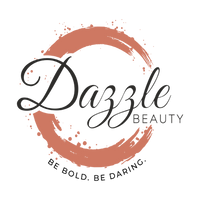
Hair Care Tips for Curly, Straight, and Wavy Hair !!
Each hair type—whether curly, straight, or wavy—comes with its unique beauty and challenges. By understanding and embracing these differences, you can make your hair shine like never before. Here are some essential hair care tips for curly, straight, and wavy hair, so you can keep your locks looking their best.
Hair Care Tips for Curly Hair
Curly hair is known for its volume, texture, and bounce. However, it’s also more prone to dryness and frizz due to its structure, which makes it harder for natural oils to reach the ends. Here’s how to keep those curls hydrated and defined:
- Moisturise, moisturise, moisturise: Choose a sulfate-free shampoo that doesn't deplete your hair of its natural oils because curly hair need more hydration. For extra moisture, use a thick, moisturising conditioner and don't be scared to leave it in.
- Use a Leave-In Conditioner or Curl Cream: After washing, use a leave-in conditioner or curl cream to maintain soft, defined curls. These products improve curl definition, increase moisture, and lessen frizz.
- Avoid Overwashing: Too many washes can deplete curly hair of its natural oils, leaving it feeling drier. Depending on your hair's requirements, try to wash curly hair once or twice a week.
- Try the “Plopping” Method: After applying products to wet hair, use a cotton T-shirt or microfiber towel to “plop” your hair by wrapping it on top of your head. This method encourages curl formation and reduces frizz.
- Use a Wide-Tooth Comb: Avoid brushing curly hair when it’s dry, as this can cause breakage and frizz. Instead, use a wide-tooth comb to detangle while your hair is wet and coated with conditioner.
Hair Care Tips for Straight Hair
Straight hair reflects light well, giving it a natural shine, but it can also be more prone to greasiness and limpness. Here’s how to keep straight hair looking sleek and voluminous:
- Choose a Lightweight Shampoo and Conditioner:To avoid buildup, use a lightweight, volumising shampoo on straight hair, which can get oily rapidly. To prevent weighting down the roots, conditioner should only be administered to the ends.
- Dry Shampoo for Oil Control: Dry shampoo is your greatest friend if your straight hair becomes oily in between washes. It enhances texture, boosts volume, and absorbs extra oil at the roots without requiring frequent hair washes.
- Blow-Dry Upside Down for Volume: Straight hair, particularly around the roots, can appear flat at times. Blow-dry your hair upside down to give it a natural lift. Additional body can also be achieved by applying a volumising mousse or spray to damp hair prior to blow-drying.
- Avoid Heavy Styling Products: Straight hair is prone to becoming oily and weighed down by products. Opt for lightweight serums or sprays that enhance shine and reduce frizz without leaving residue.
- Protect from Heat: If you frequently use a straightener or blow dryer, make sure to apply a heat protectant spray to prevent damage. Straight hair shows heat damage more easily, so regular trims are essential to keep ends looking healthy.
Hair Care Tips for Wavy Hair
Wavy hair combines the best of straight and curly textures, offering both volume and flexibility. However, it can sometimes be frizzy or hard to control. Here’s how to make those waves work for you:
- Use a Gentle, Hydrating Shampoo: Wavy hair needs moisture, but it’s also prone to buildup. Opt for a gentle, sulfate-free shampoo that won’t strip your hair but still keeps it clean and refreshed.
- Enhance Waves with Lightweight Styling Products: For wavy hair, lightweight gels, mousses, or sea salt sprays are ideal for enhancing waves without weighing them down. Apply these products to damp hair, scrunch, and let it air dry for natural texture.
- Diffuse for Defined Waves: If you’re blow-drying, attach a diffuser to your dryer. This reduces frizz and enhances wave formation, leaving you with more defined waves. Scrunch your hair as you dry for added volume and texture.
- Don’t Overbrush: Brushing wavy hair can lead to frizz and disrupt the wave pattern. Use your fingers or a wide-tooth comb to detangle when your hair is damp, and try to avoid brushing it when dry.
- Experiment with Overnight Styles: To maintain your waves overnight, consider braiding your hair loosely or twisting it into a loose bun before bed. This helps keep the wave shape without frizzing.
General Hair Care Tips for All Hair Types
While each hair type has specific needs, these general tips will benefit everyone, regardless of texture:
- Avoid Excessive Heat: Heat can damage any hair type, so try to limit the use of hot tools. When using them, always apply a heat protectant spray and keep the temperature as low as possible.
- Regular Trims: Split ends can make any hair type look unhealthy. Schedule regular trims every 6–8 weeks to keep your hair looking fresh and prevent breakage.
- Stay Hydrated and Eat a Balanced Diet: Healthy hair starts from within. Drinking enough water and eating a balanced diet rich in vitamins and minerals will help keep your hair strong and vibrant.
- Use Satin or Silk Pillowcases: Cotton pillowcases can cause friction, leading to frizz and breakage. A satin or silk pillowcase reduces friction and helps maintain the natural moisture in your hair.
- Avoid Tight Hairstyles: Constantly pulling your hair back tightly can cause breakage and strain on your hair follicles. Opt for loose styles or use gentle hair ties to avoid unnecessary tension.
In conclusion
Each type of hair—curly, straight, and wavy—has different maintenance requirements, but you can maximise your natural texture with the correct technique. With these customised suggestions, embrace your hair type and provide it the respect it merits. You may have gorgeous, healthy hair that shines in every style by utilising products that are appropriate for your texture, using gentle handling practices, and taking care of your hair from the inside out.
Protect from Heat: To avoid damage, use a heat protectant spray if you often use a blow dryer or straightener. Regular cuts are necessary to maintain the healthy appearance of the ends of straight hair because it is more susceptible to heat damage.








